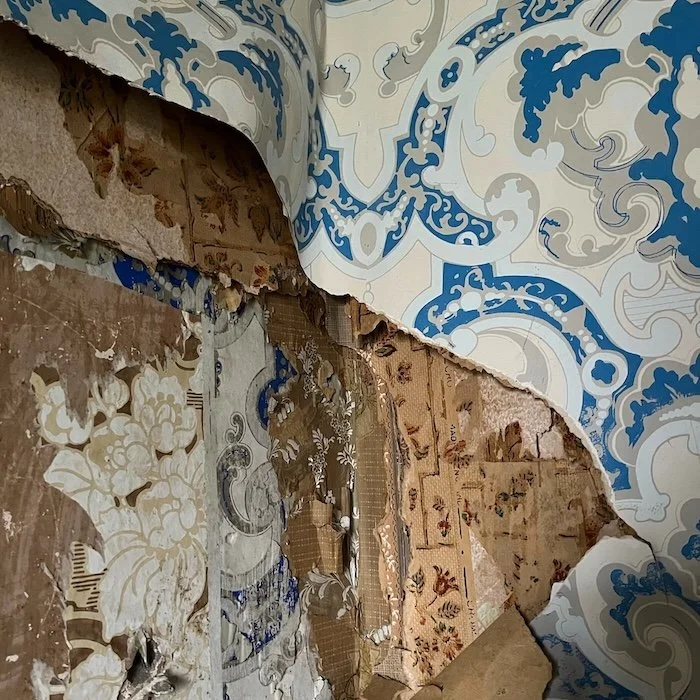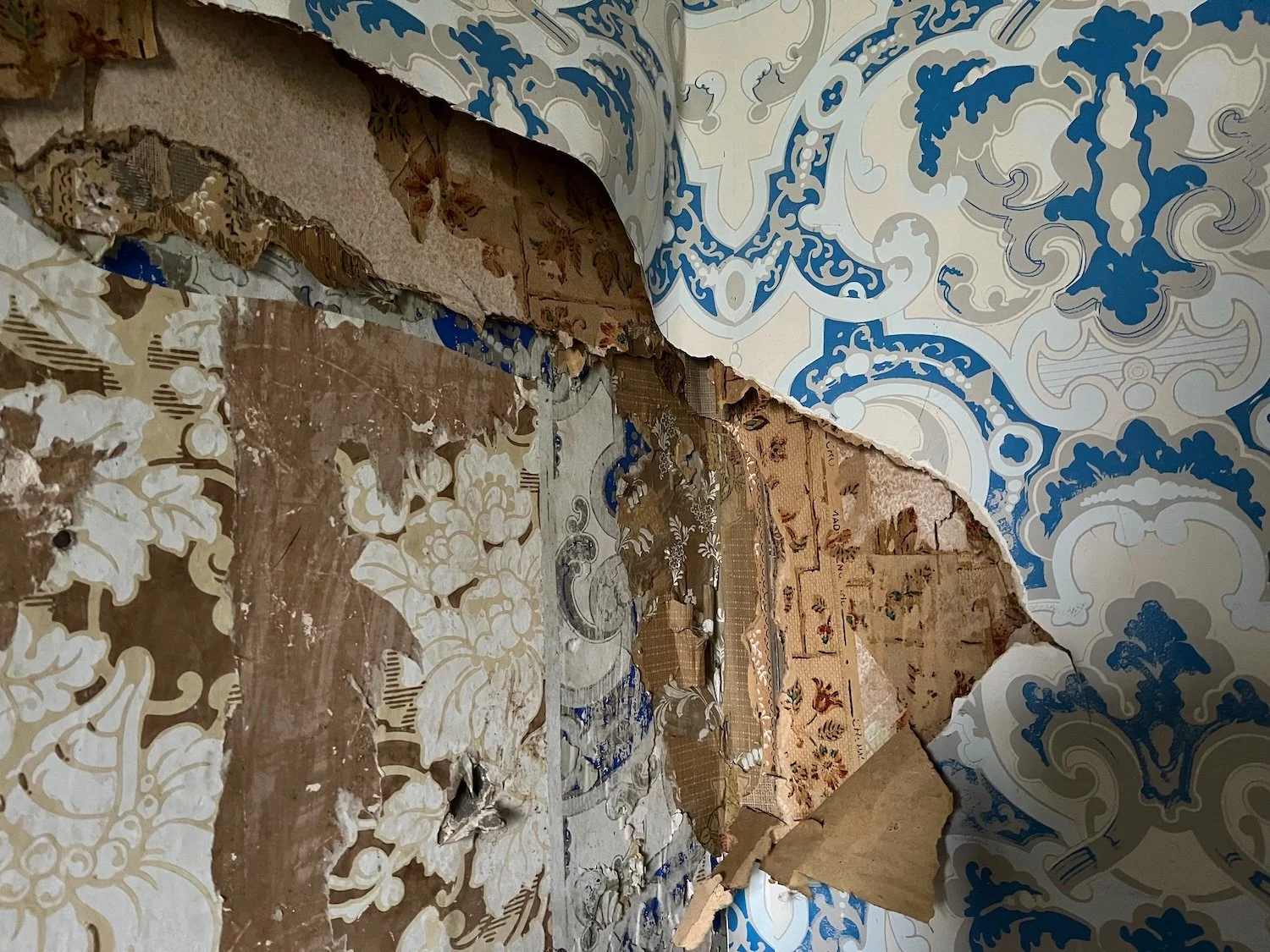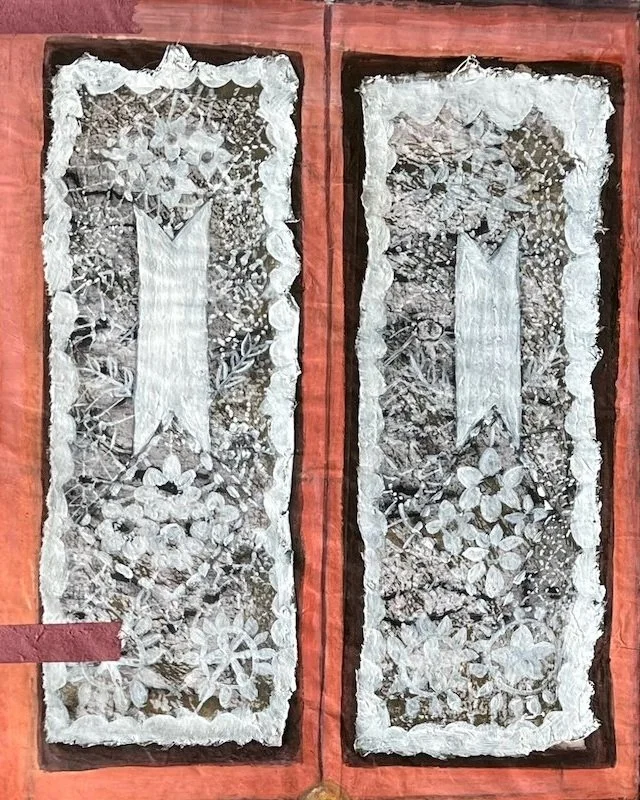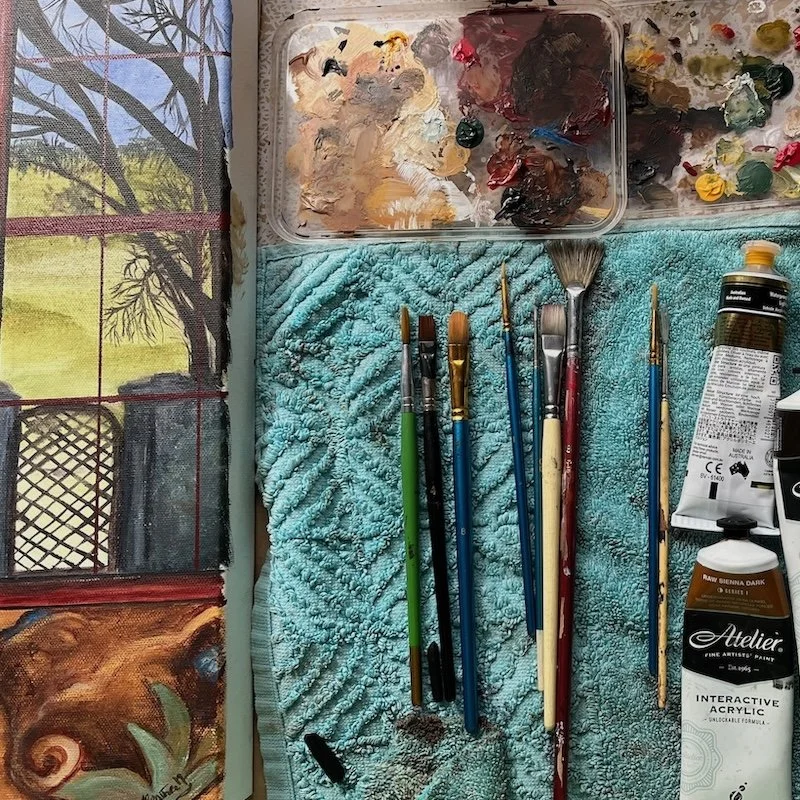Peeling Layers
Successive layers of wallpaper at the Oatlands Supreme Court building
Unpacking your thoughts about what you create, then writing it about it is a valuable skill for an artist to have. I realised this week how much this skill is learnt through repetition.
Even though I might write about my work and processes in my blogposts, these rambles have to be condensed into under 200, 100 or even 50 words to encapsulate what the work is about for an artist statement.
On return home after my artist residency this is exactly what I needed to do for the two works I have donated to be part of the Southern Midlands Council collection. Fortunately I was able to copy and paste sentences I had already written about in the blogposts from my artist residency. Even so, these generalised thoughts had to pertain to these two specific artworks and also be short and pithy.
I wrote about the motifs I used in my paintings as well as the process of creating them. I wrote how the architectural features in the town and its houses became time portals I used to enter colonial thinking. What did the urge to decorate the interiors of houses with ornate wallpapers reveal about how people of that time perceived ‘civilisation’ ? How did having lace curtains in the windows denote status in this idea of civilised society?
The beautiful wallpapers which had been replicated in the Oatlands houses had been sourced from fragmented scraps and torn layers of historical occupation. These fragments have been carefully pieced together to form a sequential pattern flowing through the rooms of houses, hotels and restored buildings. Their colours became my palette, their soothing repetition a balm to paper over the terrible history of violent land possession.
As I unpack what I made and write about it, I am reminded that layers of patterning create ideas. That peeling back those layers reveals what lies beneath as any home renovator will tell you. The bare bone motifs I used, the fragments of layered wallpapers hinted at what my paintings were about, how they responded to the town.
I used this idea of patterned layers in all my artworks. Wallpaper fragments appeared in windows, the lace curtains were painted in white on papers I had already stained with mud and the frottage marks from convicts’ chisel incisions on stone walls. Each layer another story, another time, another way of thinking.
Frottaged marks from sandstone walls of convicts’ chisels - ink & mud on paper
Painting over mud and frottage marks with white paint to make lace curtains






